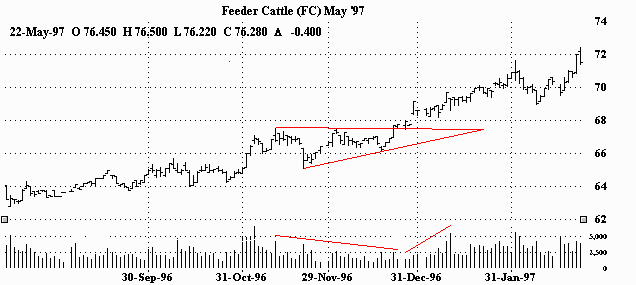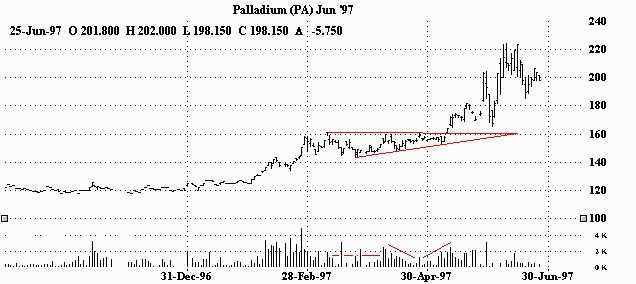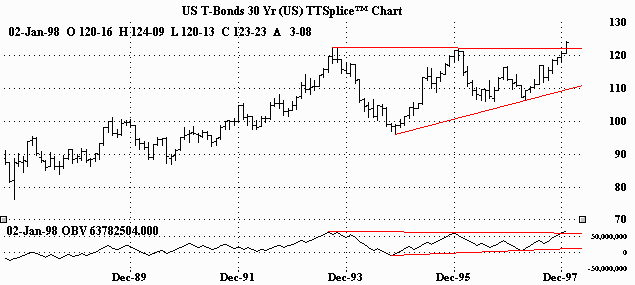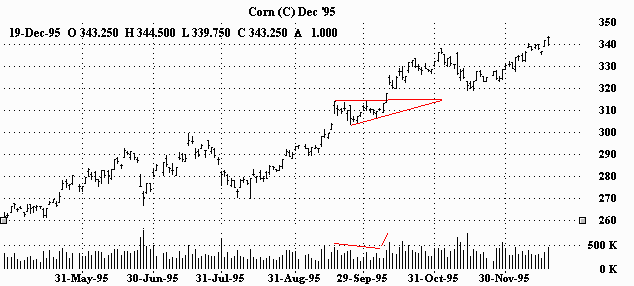CHART EXAMPLES OF ASCENDING TRIANGLE PATTERNS / COMMODITIES ASCENDING TRIANGLE IN AN UPTREND (BULLISH)
Ascending triangle in an uptrend. Volume falls off during the formation, picks up and then expands on the breakout and ensuing upmove.
ASCENDING TRIANGLE IN AN UPTREND (BULLISH)
An ascending triangle in an uptrend. After nearly two months of indecision, the market aggressively resolves itself in the direction of the trend. As for volume, other than a few spikes of activity within the pattern, there is a general lessening of participation with a marked increase on the breakout.
ASCENDING TRIANGLE IN AN UPTREND (BULLISH)
This ascending triangle was over five years in the making. (It's enormous!) The length of time it took to form as well as the enormity of the pattern could potentially hold added significance. (Remember, this is a monthly chart.) We're using the on balance volume or OBV indicator to view the volume on this chart. As described previously, OBV is a running cumulative total of positive and negative volume numbers. You can see the volume reading rise and fall with the price. In fact, you can even chart the OBV and see it take on the same pattern (ascending triangle) as the market itself. Notice the price and volume both breaking out of the pattern simultaneously.
ASCENDING TRIANGLE IN AN UPTREND (BULLISH)
An ascending triangle in an uptrend. Diminishing volume during the pattern and a jump in volume on the breakout.
ASCENDING TRIANGLE IN AN UPTREND (BULLISH)
The ascending triangle in this uptrend continued the move higher. Volume wanes a bit during the formation and then picks up on the breakout. The march higher is also accompanied by sustained volume.
The information contained here was gathered from sources deemed reliable, however, no claim is made as to its accuracy or content. This does not contain specific recommendations to buy or sell at particular prices or times, nor should any of the examples presented be deemed as such. There is a risk of loss in trading futures and futures options and you should carefully consider your financial position before making any trades. The reference to statistical probabilities does not pertain to profitability, but rather to the direction of the market. The size and the duration of the markets move, as well as entry and exit prices ultimately determines success or failure in a trade and is in no way represented in these statistics. Furthermore, no representation is being made that any of the examples shown resulted in actual trades. This is not, nor is it intended to be, a complete study of chart patterns or technical analysis and should not be deemed as such.
Futures and options trading carries significant risk and you can lose some, all or even more than your investment.
|




